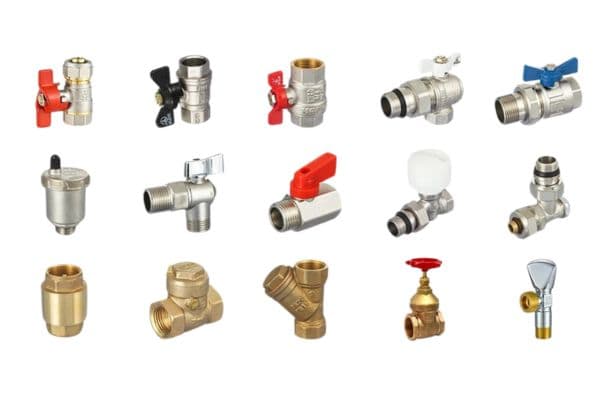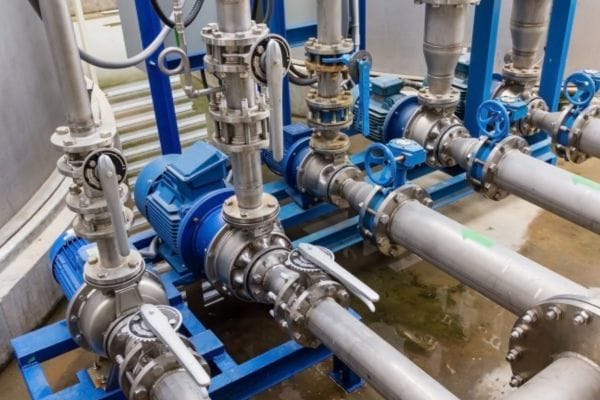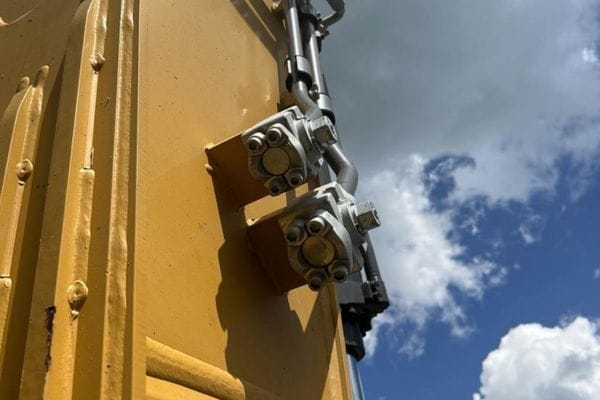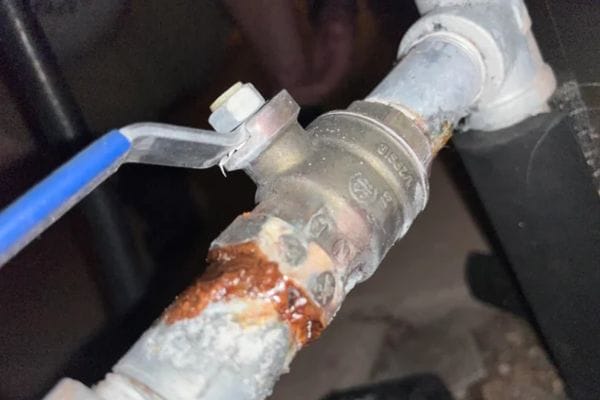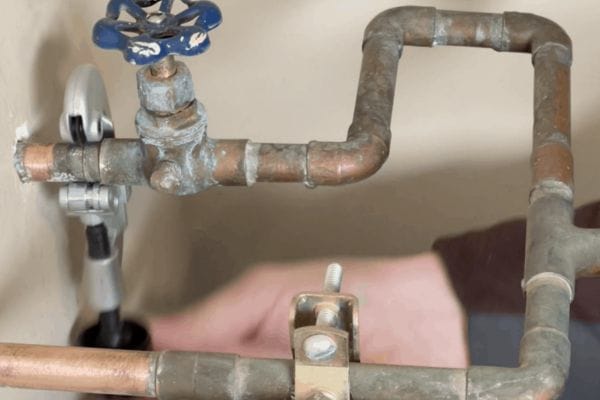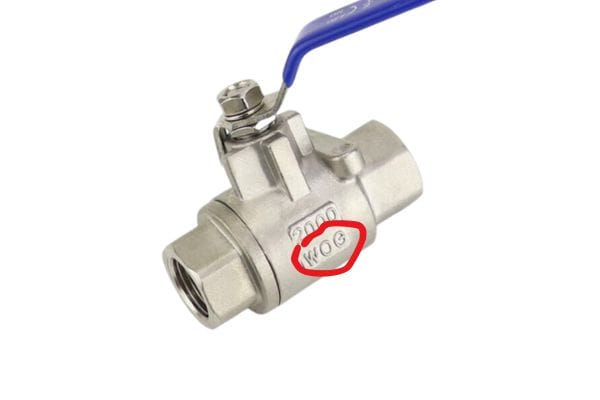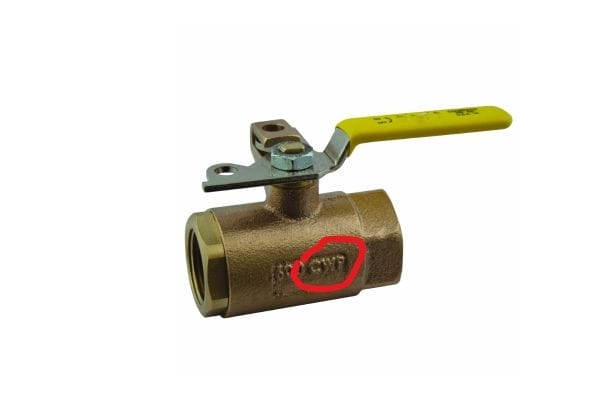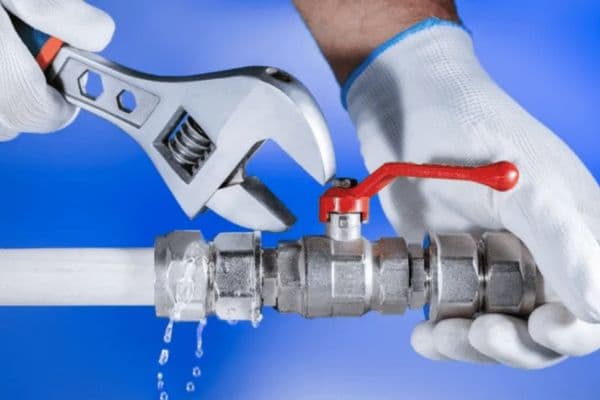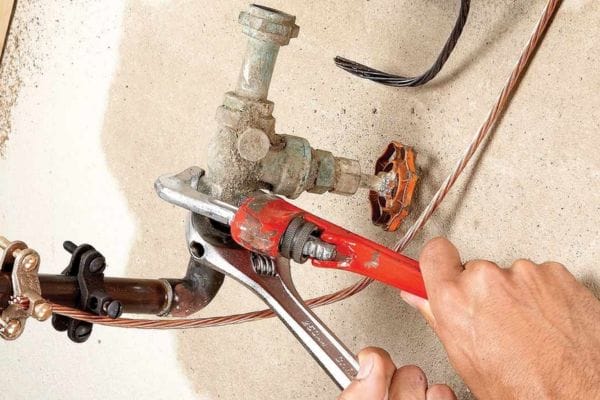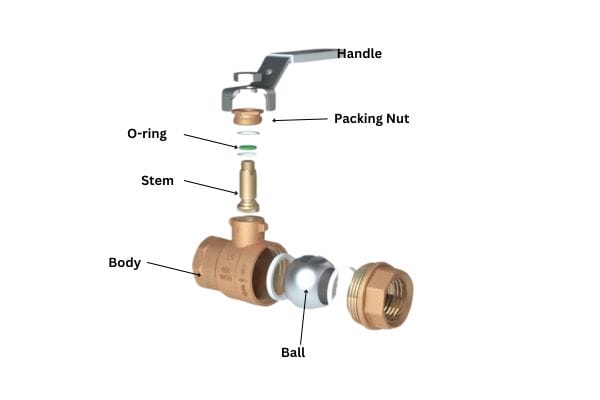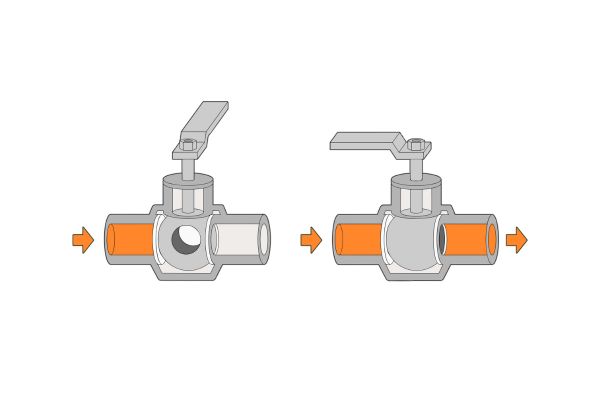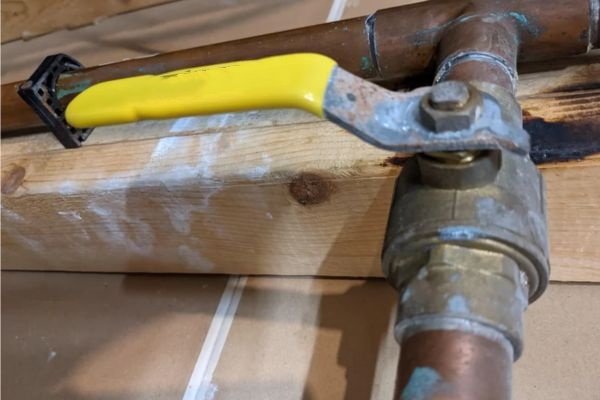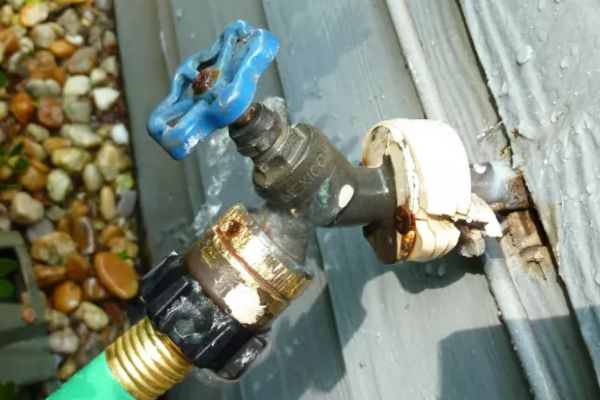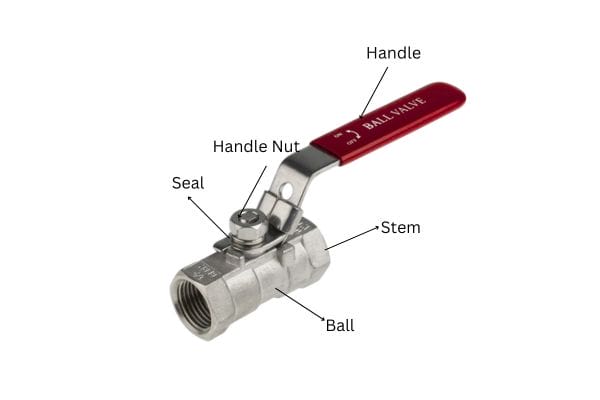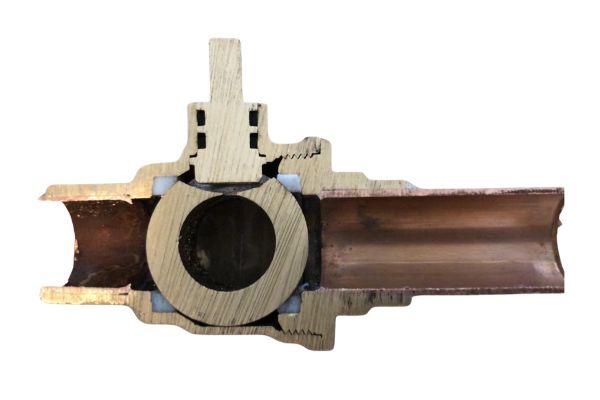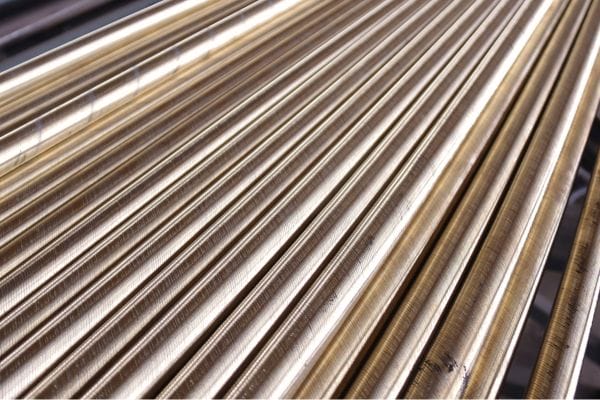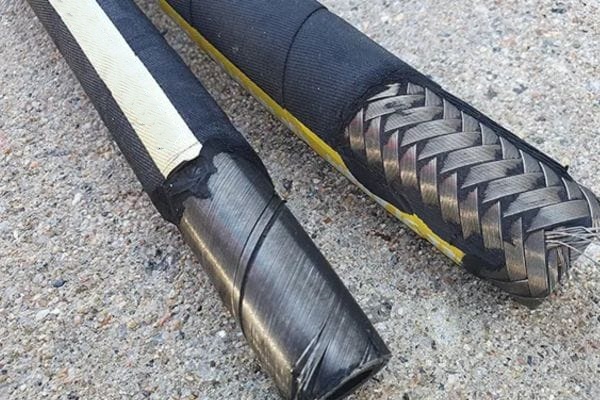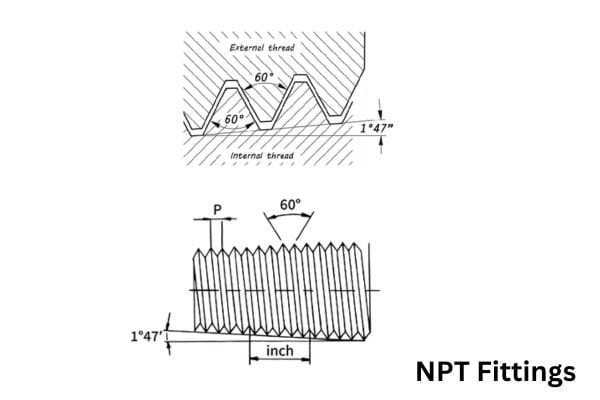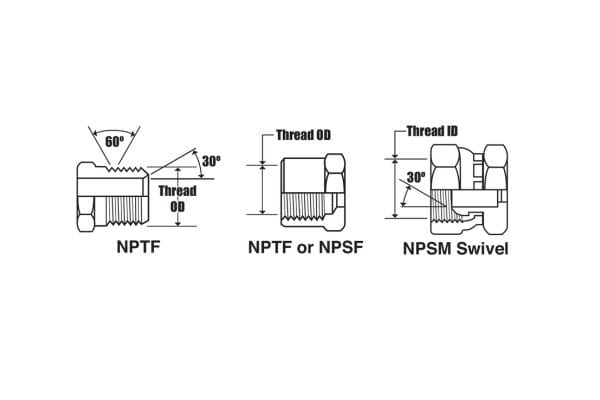Misalignment between the ball valve and the copper pipe, insufficient flux, or incorrect heating can result in weak solder joints that allow for leaks over time. It’s important to understand these common pitfalls so that you can avoid them and ensure that your soldering technique results in a durable, leak-proof connection.
What is a Ball Valve and How Does It Work?
Understanding the Function of a Ball Valve
A ball valve is a type of valve that uses a spherical ball with a hole through its center to control the flow of fluids or gases in a pipe. The valve works by rotating the ball inside the valve body, either blocking or allowing flow depending on the ball’s position. When the hole in the ball is aligned with the pipe, the valve is open, allowing the flow to pass through. When the ball is rotated 90 degrees, the hole is perpendicular to the pipe, which fully blocks the flow and shuts off the valve. This simple mechanism provides a reliable, quick, and efficient way to control fluid flow.
Ball valves are known for their durability, quick operation, and tight sealing capabilities, which make them ideal for a wide range of applications. They are commonly used in applications where tight shut-off and minimal flow resistance are required.
Types of Ball Valves and Their Applications
Standard Ball Valve The most common type, featuring a single ball that is rotated to control the flow. It is primarily used in industrial, plumbing, and HVAC systems for on/off control of liquid and gas flow.
Trunnion Ball Valve This type of ball valve has additional supports or “trunnions” on both sides of the ball. Trunnion valves are designed to handle larger volumes and higher pressure applications, often found in oil, gas, and pipeline systems.
Floating Ball Valve In a floating ball valve, the ball is not fixed but “floats” within the valve body. The pressure of the fluid pushes the ball against the valve seat, which provides the sealing action. This type is commonly used in smaller to medium-sized systems and is ideal for controlling fluid flow in low to medium pressure applications.
Multi-port Ball Valve Multi-port ball valves have more than two openings (ports), allowing for the control of the flow in multiple directions. These are used in more complex systems where fluid needs to be directed to multiple lines, often in chemical, pharmaceutical, or process industries.
V-Port Ball Valve A V-Port ball valve features a ball with a V-shaped notch, providing more precise control of fluid flow. This type is used when flow regulation is more important than simple on/off control and is typically seen in HVAC, water treatment, and chemical processing.
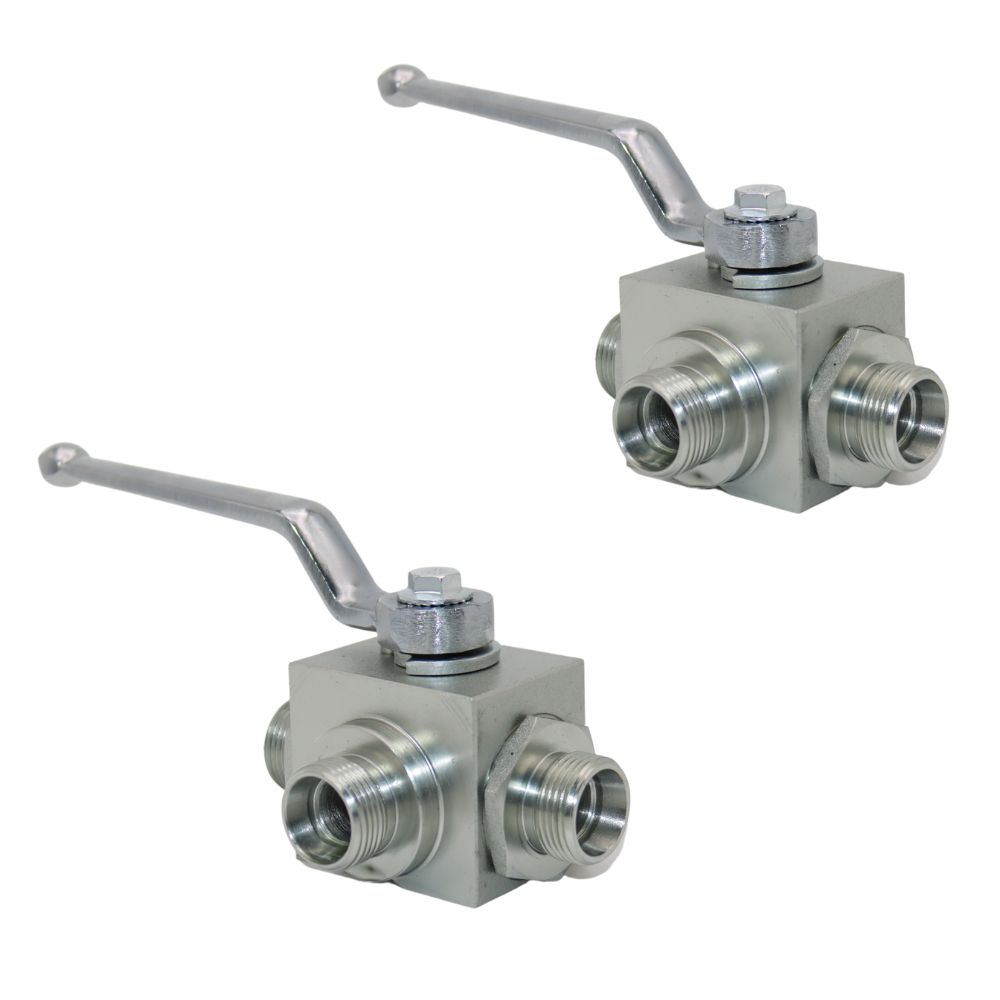
Why Ball Valves Are Preferred in Plumbing and HVAC Systems
Reliable Shut-off Ball valves are known for their ability to provide a reliable, full shut-off when they are in the closed position. This makes them essential in plumbing systems, where complete isolation of the flow is often necessary for maintenance or repairs.
Minimal Flow Resistance The ball design of the valve allows fluids to pass through with minimal turbulence or resistance. This makes ball valves ideal for applications where the flow rate needs to remain consistent, such as in HVAC systems and pressurized fluid systems.
Durability and Longevity Ball valves are designed to last a long time, even in harsh conditions. The spherical ball and the tight seals can withstand high temperatures, pressures, and corrosion, which is why they are favored in both residential and industrial plumbing and HVAC systems.
Ease of Operation The mechanism of a ball valve is simple and intuitive to operate. With just a quarter-turn, you can switch from fully open to fully closed, making it easy for plumbers, HVAC technicians, and homeowners to operate the valve without requiring excessive force or complex adjustments.
Step-by-Step Guide: How to Solder a Ball Valve
Step 1: Aligning the Ball Valve and Copper Pipe
Proper alignment is crucial to ensure a tight, leak-free connection between the ball valve and the copper pipe. Follow these steps to get the alignment just right:
Check the Fit: Slide the copper pipe into the ball valve’s inlet and outlet ports to ensure the pipe fits snugly inside. The pipe should extend slightly into the valve, ensuring maximum surface area for the solder to bond to.
Ensure the Correct Orientation: Ball valves typically have a flow direction marked on them. Make sure the valve is aligned correctly in the system to ensure it functions properly once soldered. Incorrect alignment can affect flow control and lead to operational problems.
Secure the Components: Use clamps or pipe holders to hold the ball valve and copper pipe in place while you work. This ensures they stay aligned during the soldering process, preventing any movement that could weaken the joint.
Step 2: Applying Flux for Better Adhesion
Flux is essential for soldering copper pipes because it helps the solder adhere to the metal and prevents oxidation during heating. Here’s how to apply flux properly:
Clean the Surfaces: Before applying flux, make sure both the copper pipe and the ball valve’s connection areas are clean. Use sandpaper or a wire brush to remove any oxidation, dirt, or grease from the surfaces. Clean the area thoroughly to ensure good adhesion.
Apply Flux Generously: Once the surfaces are clean, apply a generous layer of flux around the outside of the copper pipe and inside the ball valve fitting. The flux should cover the entire area that will be in contact with the solder. Don’t skimp on flux, as it helps the solder flow smoothly and prevents weak joints.
Ensure Even Coverage: Use a brush or applicator to spread the flux evenly around the pipe and valve. It’s important that the flux is applied evenly, as this ensures consistent bonding during soldering.
Step 3: Heating the Joint to the Perfect Temperature
Properly heating the joint is key to achieving a strong solder bond. Overheating or underheating the joint can result in weak connections or incomplete seals. Follow these guidelines:
Use a Torch or Soldering Iron: While both tools can be used for heating, a propane torch is typically more effective for larger valves and pipes. Use a steady flame that heats the pipe and valve fitting evenly.
Heat the Joint, Not the Solder: Aim the torch at the copper pipe and valve fitting, not directly at the solder. You want the joint to reach the proper temperature for the solder to flow, not the solder itself. Hold the flame a few inches away from the pipe, heating the metal slowly and evenly.
Watch for the Right Temperature: Copper reaches the ideal soldering temperature around 400°F to 500°F (200°C to 260°C). You can check the temperature by seeing when the flux begins to bubble. This is an indicator that the joint is hot enough for the solder to melt.
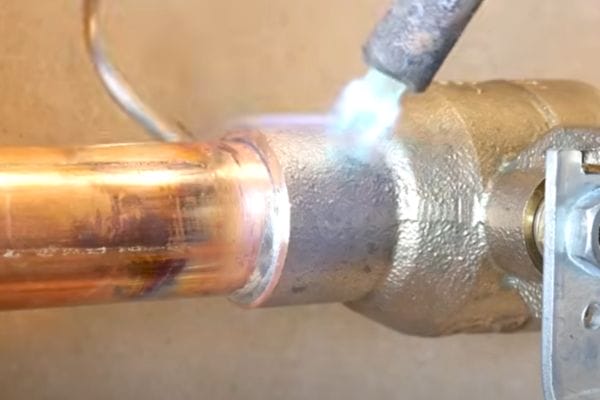
Step 4: Adding Solder for a Leak-Proof Seal
Once the joint is at the right temperature, it’s time to add the solder. This step creates the seal that prevents leaks.
Feed the Solder into the Joint: Touch the end of the solder to the joint while keeping the heat on the pipe. The solder should begin to melt and flow into the gap between the copper pipe and the ball valve. Be patient and let the solder flow around the entire circumference of the joint.
Ensure Full Coverage: Move the solder along the joint until you’ve covered the entire circumference of the connection. It’s important that the solder completely fills the joint for a strong, leak-proof bond.
Use the Right Amount of Solder: Avoid overloading the joint with too much solder, as this can cause drips or unwanted buildup. Just enough solder to form a smooth, solid connection is ideal.
Step 5: Cooling and Checking for Leaks
After the soldering is complete, it’s important to let the joint cool properly and check for any potential leaks.
Allow the Joint to Cool Naturally: Once the solder has been applied, stop heating the joint and let it cool naturally. This will allow the solder to solidify and form a strong bond. Avoid using water or ice to cool the joint faster, as this can cause the solder to crack or weaken.
Inspect the Joint for Leaks: After the joint has cooled, carefully inspect it for any signs of leaks. A good way to check is to pressurize the system slowly (if possible) or simply look for any wet spots around the joint. If you see any leakage, you may need to reheat the joint and apply more solder to seal it completely.
Test the Valve: Once you’re confident that the joint is secure, test the ball valve by turning it on and off. Ensure that the valve operates smoothly and the connection is leak-free. A successful soldering job will result in a perfectly sealed, durable joint that will stand up to the pressures of your system.
Common Mistakes to Avoid When Soldering Ball Valves
Overheating the Valve: How to Prevent Damage
One of the most common mistakes when soldering ball valves is overheating the valve or the pipe. Excessive heat can damage the valve’s internal components, weaken the solder joint, and even cause the valve to warp or crack. Here’s how to avoid overheating:
Use the Right Temperature: Copper pipes and fittings require a temperature of around 400°F to 500°F (200°C to 260°C) for soldering. If the valve or pipe gets too hot, it can cause the metal to degrade, leading to weakened connections and potential leaks.
Don’t Overheat the Valve Body: The valve body itself is typically made of brass or stainless steel, which can be more sensitive to heat. Aim the torch at the copper pipe, not directly at the valve, to avoid overheating the valve body. Keep the heat focused on the joint area.
Be Mindful of Time: Soldering doesn’t require prolonged heating. Apply heat for about 30 seconds to a minute, or until the flux begins to bubble, then add solder. Prolonged exposure to heat will cause unnecessary stress on the materials.
Cool Down Gradually: After soldering, allow the valve to cool naturally before handling it. Sudden temperature changes, such as cooling with water, can cause thermal shock and may crack the valve or the solder joint.
Insufficient Flux: Why It’s Essential for a Perfect Seal
Flux is a crucial component of the soldering process, and insufficient flux can lead to weak, porous solder joints prone to leaks. Here’s why flux is essential and how to avoid underapplying it:
Prevents Oxidation: Flux prevents oxidation by cleaning the surfaces as the metal heats up. Without flux, oxidation can form on the copper surface, which makes it difficult for the solder to bond effectively.
Ensures Proper Flow: Flux also helps the solder flow smoothly around the joint, ensuring that it adheres evenly to the copper pipe and the ball valve. Insufficient flux can cause the solder to clump or bead up rather than flowing around the joint, which results in a weak connection.
Apply Generously: Always apply a generous layer of flux to both the pipe and the ball valve fitting before heating. Don’t skimp on flux—this is not the place to be conservative. Be sure to coat every contact surface to guarantee optimal bonding.
Use the Right Type of Flux: Different soldering jobs require different types of flux. Make sure you use flux that is designed for copper and the specific type of solder you’re using. Always choose a non-corrosive flux that is safe for potable water systems if working with drinking water pipes.
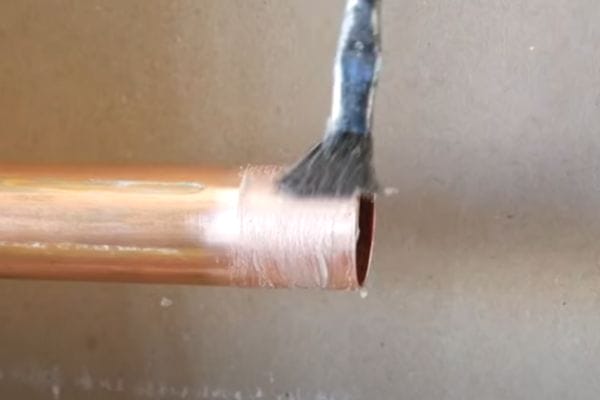
Not Checking the Alignment: How Misalignment Causes Leaks
Misalignment between the ball valve and the copper pipe is another common mistake that can lead to leaks and operational issues. Proper alignment ensures that the valve operates as intended and the joint forms a solid, leak-free seal. Here’s how to avoid misalignment:
Align the Valve and Pipe Before Soldering: Before you even begin soldering, double-check the alignment of the copper pipe and the ball valve. Both should be perfectly aligned and positioned straight in relation to each other. A misaligned valve can cause the solder to fill unevenly, creating weak spots that will leak over time.
Use Clamps to Hold Everything in Place: During the soldering process, use clamps or pipe holders to secure both the valve and the pipe in place. This ensures that there is no movement while you apply heat and solder, preventing the components from shifting out of alignment.
Check for Gaps: Once you’ve aligned the valve and pipe, check for any visible gaps between the two components. Even the slightest gap can result in poor solder adhesion and a weakened joint, leading to leaks. Make sure the pipe fits snugly inside the valve fitting.
Avoid Over-tightening: When using threaded connections, avoid overtightening the ball valve to the pipe, as this can cause misalignment and stress on the joint. Hand-tighten the valve, and if necessary, use a wrench to secure it slightly without overdoing it.
Tips for Achieving a Perfect Valve Seal
How to Create a Strong Bond Between the Ball Valve and Copper Pipe
A strong bond is essential for ensuring that your ball valve maintains a leak-proof seal over time. Here are some key steps to follow:
Ensure Proper Cleaning: Before applying flux and solder, clean the copper pipe and valve fitting thoroughly to remove any oxidation, oils, or debris. Use a wire brush or sandpaper to gently scuff the surfaces to ensure that the metal is clean and exposed for better solder adhesion.
Fit the Pipe and Valve Correctly: Align the copper pipe and ball valve properly to ensure they fit snugly together. There should be no gaps or misalignment between the pipe and the valve fitting. This helps the solder to flow evenly around the joint, creating a stronger bond.
Use High-Quality Solder: Always use high-quality, lead-free solder designed for plumbing and HVAC applications. A good solder will melt and flow evenly into the joint, ensuring complete coverage and a durable bond. Ensure that your solder is appropriate for the temperatures and pressures your system will handle.
Apply Heat Evenly: When heating the joint, make sure the heat is distributed evenly across the copper pipe and valve fitting. Direct the flame of the torch evenly around the joint area, not just in one spot, to ensure that the entire area reaches the proper temperature for soldering.
The Role of Soldering Flux in Achieving Perfect Seal Integrity
Flux is a key component in creating a reliable, leak-proof seal between the ball valve and the copper pipe. Here’s why flux is so important:
Promotes Better Adhesion: Flux cleans the metal surfaces as it heats up, allowing the solder to adhere better to the copper. Without flux, oxidation can form on the surfaces, preventing the solder from bonding properly and weakening the connection.
Prevents Oxidation: As heat is applied during soldering, oxidation can form on the copper, which can interfere with the flow of solder and reduce the quality of the seal. Flux prevents oxidation, ensuring that the metal stays clean and ready for a solid solder bond.
Ensures Smooth Flow of Solder: Flux helps the solder to flow more easily around the joint, filling in gaps and creating a more uniform seal. By using flux, the solder is less likely to clump or form uneven bead patterns, ensuring the joint remains strong and leak-free.
Apply Generously, But Evenly: It’s important to apply enough flux to cover both the pipe and the valve fitting, but avoid excess flux that could drip or cause mess. A thin, even layer is all that’s necessary to get a strong, clean bond.
Proper Cooling Techniques to Avoid Weak Joints
Once the solder has been applied and the joint is complete, proper cooling techniques are essential for ensuring the solder hardens without weakening the joint:
Allow the Joint to Cool Naturally: After soldering, let the joint cool naturally by removing the heat source and allowing it to return to room temperature. Rapid cooling, such as dousing the joint with water, can cause thermal shock and lead to cracks or weakened solder joints.
Avoid Handling the Joint Immediately: Don’t rush to touch or test the joint right after soldering. Handling the joint too soon can disrupt the integrity of the bond before it has had time to fully solidify. Wait until the joint has cooled completely to the touch, which typically takes about 10-15 minutes.
Avoid Overheating the Solder During Cooling: During the cooling process, avoid applying additional heat or touching the joint with tools that could cause the temperature to fluctuate. If the joint is heated again during cooling, it can become more prone to developing weak spots or even re-melting.
Conclusion
Mastering the art of soldering ball valves takes practice, but with the right tools, techniques, and attention to detail, anyone can become proficient at it. Soldering is a valuable skill that, once perfected, ensures the success of your plumbing or HVAC installations.
FAQ
What tools do I need to solder a ball valve?
You’ll need a propane torch, flux, solder, a wire brush or sandpaper, pipe cutter, and clamps to hold the components in place while you work. Having a wet cloth on hand for cooling the joint can also be helpful.
Can I solder a ball valve while it’s installed in the system?
It’s best to remove the ball valve from the system before soldering to avoid overheating the valve body and ensuring proper access to the pipe for soldering. However, if you must solder in place, take extra care not to overheat the valve.
How do I know if my ball valve is properly soldered?
After soldering, visually inspect the joint for a smooth, even layer of solder around the entire circumference. Once cooled, perform a leak test by turning on the system to check for any visible drips or pressure drops.
What happens if I overheat the ball valve while soldering?
Overheating can damage the valve body, distort the seal, or cause the solder to become too runny, potentially weakening the joint. Always heat the joint evenly and avoid excessive heat exposure to the valve.
How can I fix a leaking soldered ball valve?
If a ball valve is leaking, you may need to re-solder the joint. First, turn off the system, clean the joint area thoroughly, reapply flux, and then reheat and add fresh solder. Make sure the valve and pipe are properly aligned before re-soldering.
Why is flux important in soldering ball valves?
Flux helps to clean the metal surfaces, prevent oxidation, and ensure that the solder flows evenly around the joint. It’s essential for creating a strong, leak-proof seal between the ball valve and copper pipe.



